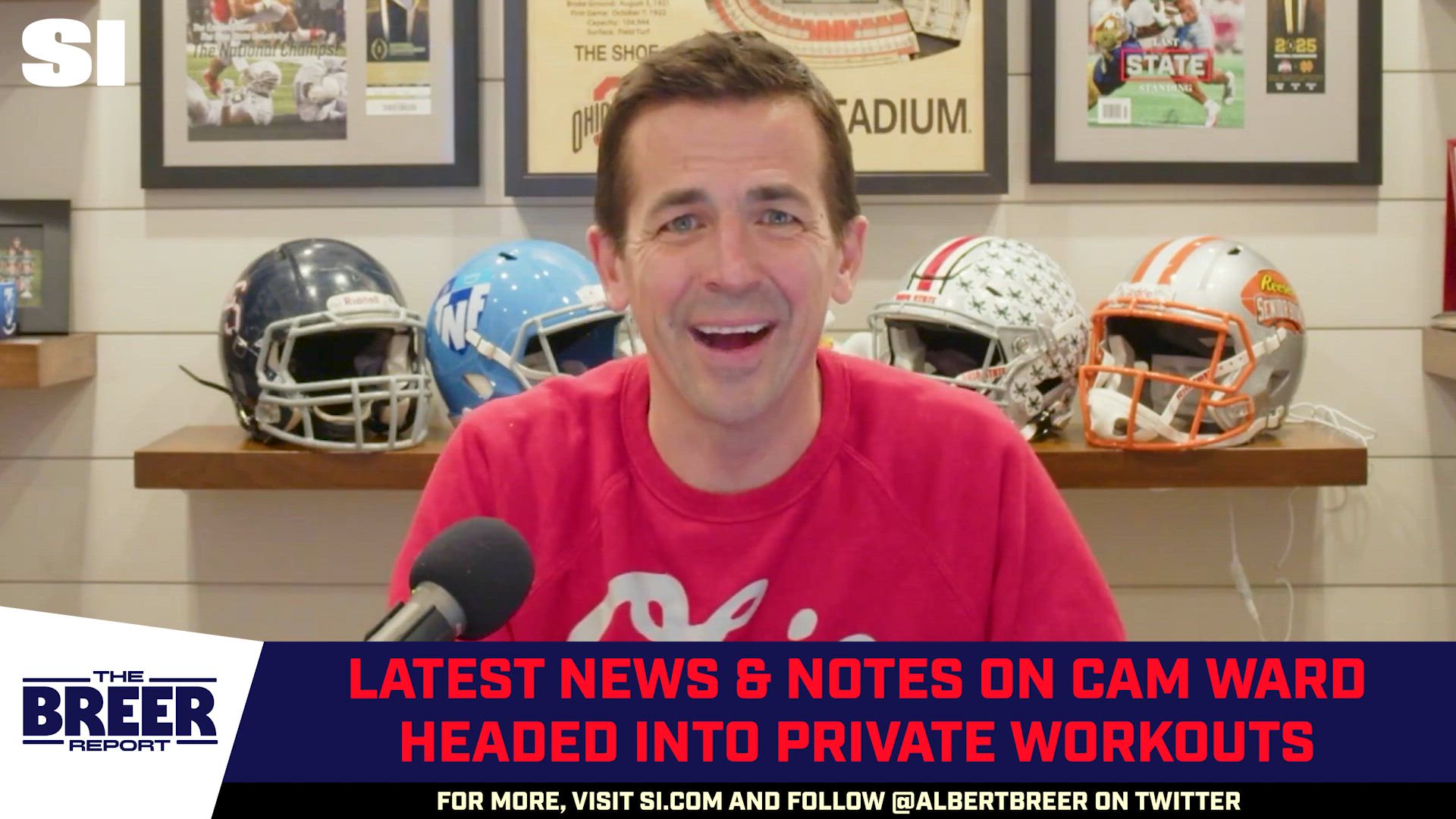
The 2025 NFL draft is approaching in a little more than three weeks.
One of the main conversations within league circles around it? The lack of arm length among the offensive tackles.
Like everything else in the NFL, opinions vary on most questions. In this case, significantly.
At the NFL scouting combine in Indianapolis, 50 offensive linemen tested for arm length. Speaking to sources on coaching staffs and in personnel departments, the general belief is that a tackle must have 33-inch arms to have a chance at survival. That said, 34-inch arms are preferable.
In this class, only eight offensive linemen had 34-inch arms. And of the first-round prospects such as LSU’s Will Campbell, Missouri’s Armand Membou, Texas’s Kelvin Banks Jr., Oregon’s Josh Conerly Jr. and Ohio State’s Josh Simmons, none checked in at better than 33.5 inches.
Still, while some around the league believe those measurements range from problematic to a nonstarter, others don’t see it the same way.
“I think arm length is forgiving,” said Carolina Panthers coach Dave Canales. “When you talk about recoverability for an offensive lineman, whether it’s in the run game or pass game, when you have length, you can be a little off with your footwork and still get yourself back into position. When you don’t have great length, you have to have a great first and second step to get your body in position, so it requires a little more technique when you lack length.
“The cool part is we have years and years and years of data of all these players of different lengths, sizes and all that, to be able to say all right, generally this is a good number, but this guy was 31 [inch] arms or 32 [inch] arms and played 15 years. This guy is in the Hall of Fame. So we have a lot of data to pull from, thanks to the combine kind of collecting all that information. At the end of the day, watch the film, what happened and that’s kind of the biggest thing to hang your hat on.”
Last year, we saw an early run on tackles in the first round, with six being taken across the first 20 picks. Here’s how they measured:
- Joe Alt, Notre Dame: 34.25 inches
- JC Latham, Alabama: 35.1 inches
- Olu Fashanu, Penn State: 34 inches
- Taliese Fuaga, Oregon State: 33.1 inches
- Amarius Mims, Georgia: 36.1 inches
- Troy Fautanu, Washington: 34.5 inches
All six of them hit the minimum benchmark, while five exceeded the desired threshold. Compared to this class, each save for Fuaga had significantly better length than the top prospects.
For example, Campbell, whom many see as the top tackle available, measured at 32 ⅝ inches at the combine before hitting 33 inches even at his pro day in Baton Rouge.
“I think everybody has these measurements, I do get a kick out of that,” said Los Angeles Rams coach Sean McVay. “Especially when you talk about a player like Will Campbell, because he plays long. You have some guys that might measure with length, but they don’t play long. Aaron Kromer, our old offensive line coach in Buffalo, does a great job. He used to say it’s one thing to measure long, but do you play long? Are you playing with extension? Are you playing with length?”
And that’s the seminal question. The common theme talking about tackles without elite arm length constantly brought their feet into the conversation. When talking to former left tackle Andrew Whitworth, who starred for 16 years with the Cincinnati Bengals and Rams, he stated that the best way to combat short arms is with quick feet, an excellent anchor and refined technique.
In short, it’s not a football death sentence. Ultimately, while some teams have a cutoff they won’t go beneath, many feel arm length can be overrated depending on what can simply be seen.
“How we evaluate is we turn on the tape,” said Arizona Cardinals coach Jonathan Gannon. “Does he block his guy? Obviously, I wouldn’t say there’s a threshold, but there are some parameters that we like to live in. But that’s not the end all be all to us. If you can play, you can play. I don’t look at any measurables until I’m done with the tape. The tape is the first tool I use and then I start to look at some measurables.”
In three weeks, the mock drafts will cease and the final product will be revealed. In the following years, these prospects’ arm lengths will become a distant memory as plays unfold and talent level is either revealed or exposed.
For some, it has been a problem that derailed a career. For others, a footnote.
“In terms of arm length and some of those different things that allow you to be successful—just based on the nature of what you’re asked to do, snap in and snap out and who you’re going against—we had a guy who was pretty good, too, who didn’t measure well on the defensive line that changed the whole game,” McVay said. “So I think those are parts of the evaluation process, but that tape always speaks to you.”
Of course, McVay was talking about Aaron Donald, an eight-time first-team All-Pro who, once eligible, will be a first-ballot Hall of Famer. For the record, Donald measured at 32 ⅝ inches, same as Campbell.
In 23 days, the draft will open in Green Bay. Names will be filled out on cards and turned in to commissioner Roger Goodell.
And in those moments, with futures of not only players but personnel folks on the line, we’ll find out how much arm length truly matters.
This article was originally published on www.si.com as NFL Draft 2025: Could Short Arms Mean Long Waits for Top Tackle Prospects?.
